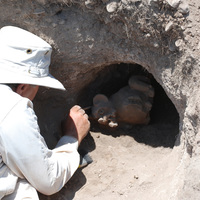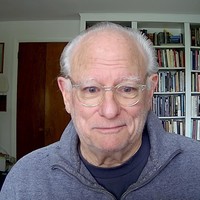Papers by Aroon Parshotam

Lake Restoration Handbook
Catchment models are useful tools to help describe and quantify the sources, transport, and fate ... more Catchment models are useful tools to help describe and quantify the sources, transport, and fate of sediment, nutrients, and other constituents in a landscape. Results from catchment models are used to quantify and understand existing conditions and used in restoration efforts by defining areas with highest contributions (hotspots, where actions would be most beneficial) and describing the relative importance of various sources (what types of actions would be most beneficial). In practice, a continuum of models exists from simple empirical models to complex process-driven models, each requiring different types and amounts of information. Each of these models has its strengths and weaknesses, which should be considered when deciding which model to apply to a specific area. In many applications, a combination of models can be either coupled or run in series to help describe how nutrients and sediment are transported from the field to downstream receiving water bodies. In this chapter, we describe the continuum of catchment models that exist and provide information for choosing specific models for various management applications. We then provide examples of catchment models used to address a wide range of scientific and policy driven issues: two models commonly applied in New Zealand (CLUES and GLEAMS) and one model (SPARROW) applied to a large river basin in the United States (Mississippi River Basin).
LERNZ.co .nz) programme in cooperation between the Information & Technology Services Division (IT... more LERNZ.co .nz) programme in cooperation between the Information & Technology Services Division (ITS) and LERNZ researchers at the University of Waikato. LERNZdb has the ability to store a wide variety of freshwater data in a consistent format, it also scores the quality of the data based on the provided quality controlled information. This allows the user to filter data based on the standard of data collection and encourages the provision of high quality data for use in modelling applications.

Soil Research, 2003
The composition of the nematode assemblage in pasture plots that received sewage sludge amended w... more The composition of the nematode assemblage in pasture plots that received sewage sludge amended with 4 rates of Cu, Ni, or Zn was assessed in 5 years; the highest rate of application of each metal was near the New Zealand regulatory limit. The activity of heavy metals in soil solution was determined at each sampling. In terms of management, pasture conditions in 1999 and 2000 were most settled, and while the activities of Cu, Ni, and Zn explained some 44% of variance in total nematodes, there were few significant correlations between nematode genera and individual heavy metals. Both Cu and Zn depressed nematode diversity (H′) and the decomposition index. There were, however, no consistent effects on any nematode functional group. Over the 5 years sampled there were few consistent correlations between soil nematodes and heavy metal activity, the greatest being significant depression of H′ by Zn in 3 years. There was no effect on the total maturity index. Although the few significant ...

Agriculture, Ecosystems & Environment, 2000
Interest in national carbon (C) budgets has increased following the signing of the Kyoto Protocol... more Interest in national carbon (C) budgets has increased following the signing of the Kyoto Protocol as countries begin to develop source/sink C inventories. In this study, specific-site measurements, regional databases, satellite observations, and models were used to test the hypothesis that New Zealand's terrestrial ecosystems are C neutral because C uptake by planted forests and scrub is roughly balanced by C losses from indigenous forests and soils. Net ecosystem C balance was estimated from the difference between net primary production (NPP) and heterotrophic soil respiration. The productivity portion of the CASA model and NOAA-AVHRR imagery were used to estimate national NPP (128 ± 14 Mt C per year). Main sources of uncertainty were the coarse spatial scale (1 × 1 km 2 grid cells), and the general lack of information on photosynthetically active radiation, light-use efficiency, and below-ground C allocation for the major vegetation types: indigenous and exotic forests, scrub, and grasslands (improved, unimproved and tussock). Total soil CO 2-C production predicted from an Arrhenius-type function coupled to climate and land-cover data was 380 ± 30 Mt C per year, suggesting that New Zealand's terrestrial ecosystems may be either (a) a net source of atmospheric CO 2 or (b) roughly in C balance if ca. 252 Mt CO 2-C per year (66%) can be attributed to roots. Soil moisture limitations on respiration were small, reducing the national value to 365 ± 28 Mt C per year. Differences between NPP and heterotrophic soil respiration were −29 Mt C per year for improved pastures, −8 Mt C per year for indigenous forests, and +4 Mt C per year for planted forests; the large negative value for improved grasslands may be due to underestimation of NPP and root respiration. Soil C losses to coastal waters, as estimated from a consideration of all the major erosion processes, were ca. 3-11 Mt C per year. These national-scale estimates of ecosystem C balance were in general agreement with those based on plot-scale data for some major ecosystems including planted forests (4 Mt C per year vs 3.7 Mt C per year, respectively) and indigenous forest (−8 Mt C per year vs ca. −2.8 Mt C per year, respectively). Poor agreement for forest regenerating after land abandonment (−17 Mt C per year vs +3 Mt C per year) was probably due to an underestimate of NPP at the national scale. Overall, the results suggest that New Zealand is a net C source, despite the fact that some ecosystems are accumulating C. For some land-use types, using the balance between NPP and soil respiration at the national scale to estimate the net eco-* Corresponding author.
seat.massey.ac.nz
... Since non-linear dynamic climate processes may be irreversible if continued beyond currently ... more ... Since non-linear dynamic climate processes may be irreversible if continued beyond currently unknown ... using activities like forestry and agriculture are from the perspective of climate change and the ... in South America and South of the Sahel, excluding the Andes, the Amazon ...
Chan, F., Marinova, D. and Anderssen, R.S. (eds) MODSIM2011, 19th International Congress on Modelling and Simulation.
Dynamic models are essential for effective operation and control of reactor systems, particularly... more Dynamic models are essential for effective operation and control of reactor systems, particularly in heterogeneous systems. The Three-Phase Fluidized-Bed Bio-Reactor (TPFBBR) presents a unique problem in that growth and detachment of biomass result in changing particle size and therefore variable effectiveness factors. A time dependent model incorporating biofilm growth and detachment, reactor flow characteristics and reaction-diffusion mechanism was developed. An exponential biofilm growth function was derived from a biomass balance using die method of characteristics. The resulting PDEs were solved using a moving-grid algorithm which is based on a Lagrangian description of the PDEs and a method of lines to dcfine the grid positions at each time level. Simulation procedures were developed, the its results presented, and key operating parameters identified.

Soil Research
Total organic carbon (C) and natural 13C abundance were measured in adjacent allophanic soils (An... more Total organic carbon (C) and natural 13C abundance were measured in adjacent allophanic soils (Andisols) and non-allophanic soils (Inceptisols) under maize (Zea mays L.) and ryegrass pasture (Lolium perenne L.) to assess the C turnover rate in soils of contrasting mineralogy and specific surface area. The allophanic soil contained more total C than the non-allophanic soil (139 v. 101 t C/ha in the upper 0–35 cm) but neither soil showed a significant difference in C content between pasture and maize, provided maize residue was retained and incorporated. The gross annual inputs under maize and pasture were both estimated to be about 9 t C/ha, consistent with the similar soil total C contents. Since the soil total C content did not appear to change with time, the gross C mineralisation was about 9 t C/ha each year. The proportion of old pasture C remaining in the soil after maize cropping for 25 years was about 78% in the allophanic soils and about 69% in the ...











Uploads
Papers by Aroon Parshotam